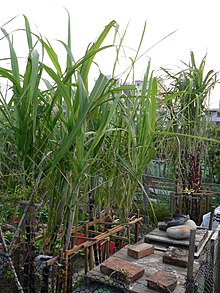
Saccharum is a genus of tall perennial plants of the broomsedge tribe within the grass family.
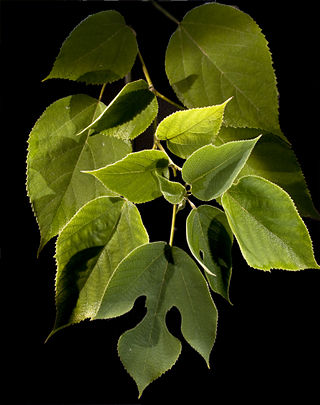
The paper mulberry is a species of flowering plant in the family Moraceae. It is native to Asia, where its range includes mainland China, Taiwan, Japan, Korea, Southeast Asia, Myanmar, and India. It is widely cultivated elsewhere and it grows as an introduced species in New Zealand, parts of Europe, the United States, and Africa. Other common names include tapa cloth tree.
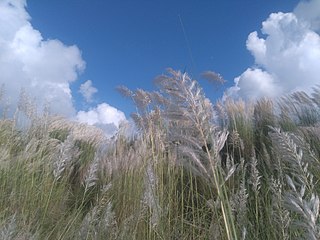
Saccharum spontaneum is a grass native throughout much of tropical and subtropical Asia, northern Australia, and eastern and northern Africa.. It is a perennial grass, growing up to three meters in height, with spreading rhizomatous roots.
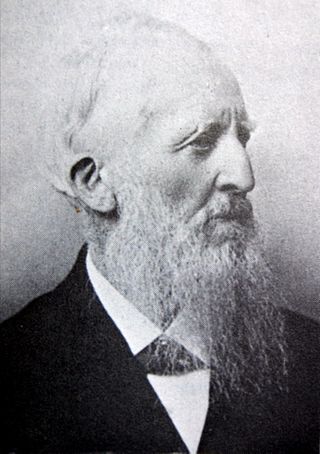
John Medley Wood was a South African botanist who contributed greatly to the knowledge of Natal ferns, is generally credited with the establishment of sugarcane mosaic virus immune Uba sugar cane in Natal and for his extensive collection of Natal plants.

Leptosphaeria sacchari is a plant pathogenic fungus which causes a disease called ring spot on Saccharum officinarum. This species was originally described in 1890 by Kruger and in 1892 by Van Breda de Haan after it was discovered in the Dominican Republic. L. sacchari is the applied name, whereas Epicoccum sorghinum is the accepted name.

Puccinia melanocephala is a fungus and plant pathogen, it is the causal agent of sugarcane rust. It was originally found on the leaves of a species of Arundinaria (cane) in Assam, India.

Sugarcane or sugar cane is a species of tall, perennial grass that is used for sugar production. The plants are 2–6 m (6–20 ft) tall with stout, jointed, fibrous stalks that are rich in sucrose, which accumulates in the stalk internodes. Sugarcanes belong to the grass family, Poaceae, an economically important flowering plant family that includes maize, wheat, rice, and sorghum, and many forage crops. It is native to the warm temperate and tropical regions of India, Southeast Asia, and New Guinea.
Eumetopina flavipes, the island sugarcane planthopper, is a species of planthopper present throughout South East Asia. E. flavipes is a vector for Ramu stunt disease, a plant disease which affects sugarcane. Ramu stunt disease is widespread throughout Papua New Guinea, but has not been detected in Australia.

The history of sugar has five main phases:
- The extraction of sugar cane juice from the sugarcane plant, and the subsequent domestication of the plant in tropical India and Southeast Asia sometime around 4,000 BC.
- The invention of manufacture of cane sugar granules from sugarcane juice in India a little over two thousand years ago, followed by improvements in refining the crystal granules in India in the early centuries AD.
- The spread of cultivation and manufacture of cane sugar to the medieval Islamic world together with some improvements in production methods.
- The spread of cultivation and manufacture of cane sugar to the West Indies and tropical parts of the Americas beginning in the 16th century, followed by more intensive improvements in production in the 17th through 19th centuries in that part of the world.
- The development of beet sugar, high-fructose corn syrup and other sweeteners in the 19th and 20th centuries.

Alocasia macrorrhizos is a species of flowering plant in the arum family (Araceae) that it is native to rainforests of Maritime Southeast Asia, New Guinea, and Queensland and has long been cultivated in South Asia, the Philippines, many Pacific islands, and elsewhere in the tropics. Common names include giant taro, giant alocasia, ʻape, biga, and pia. In Australia it is known as the cunjevoi.
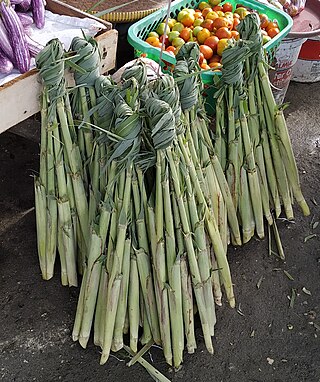
Saccharum edule is a species of sugarcane, that is a grass in the genus Saccharum with a fibrous stalk that is rich in sugar. It is cultivated in tropical climates in southeastern Asia. It has many common names which include duruka, tebu telor, PNG/Fiji asparagus, dule (Fiji), pitpit and naviso.
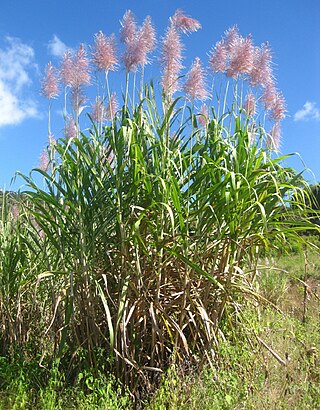
Saccharum officinarum is a large, strong-growing species of grass in the sugarcane genus. Its stout stalks are rich in sucrose, a disaccharide sugar which accumulates in the stalk internodes. It originated in New Guinea, and is now cultivated in tropical and subtropical countries worldwide for the production of sugar, ethanol and other products.

As of 2023, the Philippines produced 1,850,000 metric tons of sugar, ranking 17th in the world according to sugar production. In 2005, the Philippines was the ninth largest sugar producer in the world and second largest sugar producer among the Association of Southeast Asian Nations (ASEAN) countries, after Thailand, according to Food and Agriculture Organization. At least seventeen provinces of the Philippines have grown sugarcane, of which the two on Negros Island account for half of the nation's total production, and sugar is one of the Philippines' most important agricultural exports. In crop year 2009–2010, 29 sugar mills are operational, divided as follows: thirteen mills on Negros, six mills on Luzon, four mills on Panay, three mills in Eastern Visayas and three mills on Mindanao. As of crop year 2023–2024, 25 mills are operational. Of 25 sugar mills, 11 have their own sugar refineries. Among the major island groups, Visayas has the most number of operational mills with 17, 13 of which are from Negros Island alone.
Scirpophaga excerptalis, the white top borer or sugarcane top borer, is a moth in the family Crambidae. It was described by Francis Walker in 1863. It is found in southern Asia from the Indian Subcontinent in the west to southern China in the east, south to New Guinea, possibly Australia and the Solomon Islands.

Sugarcane Breeding Institute (SBI) is a central research institute in Coimbatore, India. It was established in 1912 and is affiliated to Indian Council of Agricultural Research. It was established to promote research efforts in sugarcane production and is the only sugarcane research institute in the country.

Charles Alfred Barber C.I.E. was a British botanist and specialist on sugarcane, who worked for much of his life in southern India. Saccharum barberi, a species of sugarcane that grows wild in northern India is named after him. He was a pioneer in the nobilization of wild canes in India, by producing hybrids between wild and hardy local species and the high-sugar-yielding cultivated Saccharum officinarum that could survive the cold winters of northern India.
Rao BahadurSir Tiruvadi Sambasiva Iyer Venkataraman CIE, FNI, FASc was an Indian botanist, agronomist and plant geneticist who specialised in the study and hybridisation of sugarcane. He developed or supervised the development of numerous high-yield sugarcane cultivars, which established India as the world's second largest sugar producer and sustained the sugar industries of numerous other nations, including South Africa, Australia, Bangladesh, Indonesia, Pakistan, and the United States.
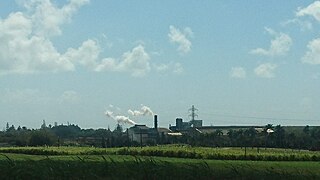
The Uba riots of 1937 or simply the Mauritian riots of 1937 refers to an outbreak of riots and civil disturbances that broke out amongst small scale sugar cane growers on the island of Mauritius in August 1937. The riots led to the death of 4 people with an additional 6 people being injured.

One of the major human migration events was the maritime settlement of the islands of the Indo-Pacific by the Austronesian peoples, believed to have started from at least 5,500 to 4,000 BP. These migrations were accompanied by a set of domesticated, semi-domesticated, and commensal plants and animals transported via outrigger ships and catamarans that enabled early Austronesians to thrive in the islands of Maritime Southeast Asia, Near Oceania (Melanesia), Remote Oceania, Madagascar, and the Comoros Islands.
Sugarcane sereh disease was a disease of sugarcane reported from Indonesia in the 19th century Dutch colonial plantations. It has been suggested that it was caused by a phytoplasma or a virus. The name sereh disease is derived from the resemblance of infected cane to lemon grass which is known as sereh. Gerharda Wilbrink discovered that heat treatment of the planting material at 45°C for half an hour made the material disease free.
